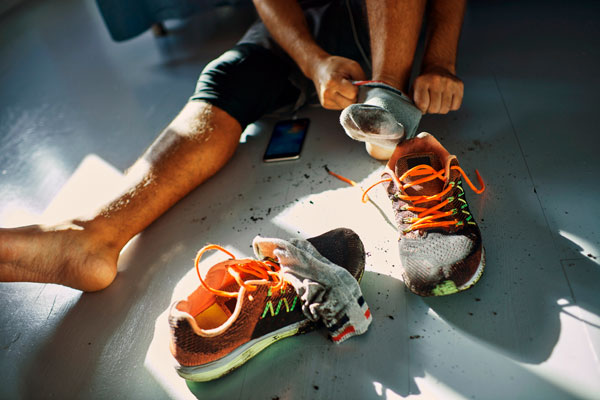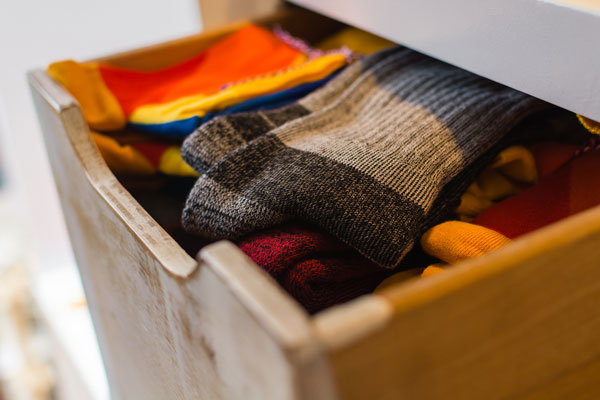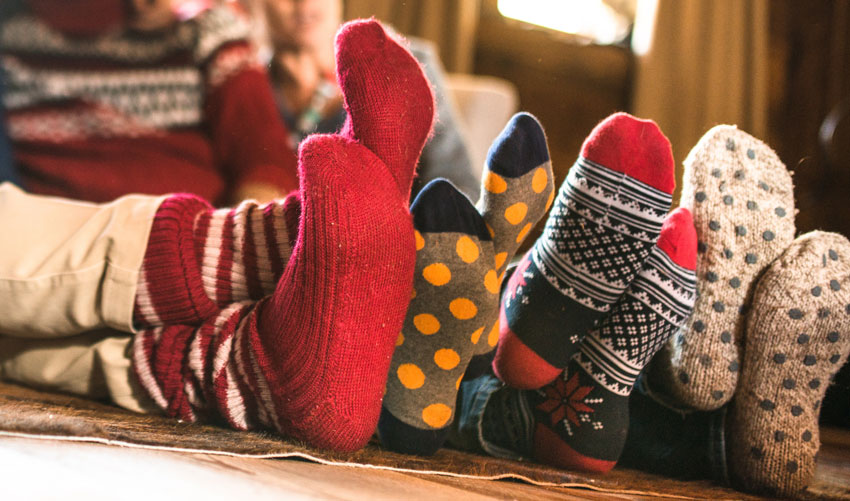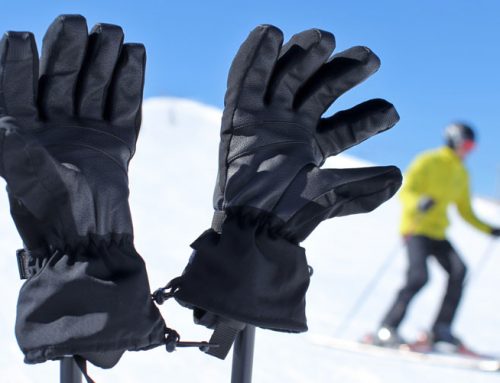Choosing the best socks for you will likely be based on what you will be wearing them for. High-tech socks are becoming the first line of defense against cold feet brought on by winter conditions. Cotton tube socks are a thing of the past, they are being replaced by great materials and technologies to warm feet.
This article uses the word “wick” quite a bit, which means: to absorb a liquid.
Table of Contents
Choosing Socks by Activity
A good way to start your sock search is by choosing the type of activity they will be worn in. Here is a list of socks types, and what to look for based on various activities:
- Multisport socks: This is a fairly broad category. You can get basic white gym socks that are made using moisture-wicking fabrics, which are great for everyday sport use (e.g., gym, basketball). Or you can get more technically advanced socks that have sole cushioning, but still minimal bulk, these are good options for runners or cross-trainers.
- Running socks: Running socks will vary from very thin with minimal padding to dense with quite thick cushioning (heel and ball of foot). It will come down to runner preference; some like less padding and a close shoe fit, others like added cushioning to reduce foot pain/fatigue.

- Hiking socks and Mountaineering socks: If you need a pair of socks to explore the great outdoors then you’ll likely want something that is comfortable to wear for long periods of time. For hiking in the summer you may want a thinner pair of socks, and for hiking in the winter/mountaineering you might want something thicker. If you think you’ll need additional warmth, heated socks are great for keeping feet warm and toasty for long periods of time.
- Walking socks: Look for socks that have good moisture-wicking capabilities.
- Backpacking socks (midweight): If you are backpacking you will likely want a sock that isn’t too thin, but isn’t too thick. Look for socks with padding in the heels and ball of the foot, and additional padding on the top of the foot and leg to add comfort on long trails.
- Skiing and snowboarding socks: For skiing and snowboarding you will want to pay close attention to length, as you want the sock to cover the length of your entire shin. Look for socks that are padded in the shin and underfoot area for comfortable riding. Mainly skiing and snowboarding socks are made to protect your feet and legs from rubbing the inside of your boots, they aren’t usually made for warmth. The thin design is meant to not interfere with making quick turns. A good workaround if you feel the cold up on the slopes is a nice pair of heated socks.
Specialized Socks
There are specialized socks that are good for multiple activities you should consider:
- Liner socks: Are worn under a pair of hiking socks typically. They are usually made of quality polyester like CoolMax®. Liner socks draw moisture away from the feet, and into the thicker outer sock where it can more easily evaporate. Liners are also quick and easy to wash and dry as they are thin, which makes them a hit with hikers and backpackers.
- Waterproof socks: Are needed for wet weather. You can get two types, 1. waterproof oversocks, which are nice for rainy weather hikes or backpacking, and will keep your regular socks underneath dry. Or you can get 2. Waterproof socks that you wear instead of regular socks. This second type should have a thick exterior, moisture barrier, and fleece interior. They are the chosen sock for surfers or paddlers.
- Heated socks: Use low amp rechargeable batteries to provide fast and efficient heating. They are shockproof, and are especially popular among people who have enjoyed more sedentary activities in winter months (e.g, hunting, fishing). With their increased quality they are increasingly becoming more widely used in strenuous activities like hiking, mountaineering, work, and other activities.
- Fleece socks: Pair nicely with shoes or sandals, and are great for lounging around the house in. They are not a good material for moisture-wicking, so it is best to avoid them for outdoor pursuits.
- Toe socks: Are exactly what they sound like, and can prevent blisters between your toes. Toe socks are generally made for running or hiking.
Sock Materials

Our feet consist of about 250,000 sweat glands, this is a lot of sweat glands for a relatively small area of our bodies. Thus, making feet one of the sweatiest parts of the human body. If you get sweaty feet, then you will want a quality fabric to help absorb and diffuse sweat. Here is a look at some sock materials:
- Synthetics: Are composed of several different materials, with comfort and fit in mind. Different synthetic socks have different benefits. Lycra and Nylon socks retain their shape well, make a nice fit, and can provide arch support in some socks. Different polyester products are commonly used because of their moisture-wicking abilities. The benefits of synthetic materials are they are durable, moisture-wicking, fast-drying, and provide good support. The disadvantages are that they can be uncomfortable in hot conditions, and their insulation reduces when they get wet.
- Merino wool: Is fast becoming the wool of choice for socks. They are great with temperature regulation, so your feet can stay comfortable in varying temperatures. Wool can absorb quite a bit of water as well, which helps maintain dry feet. Unfortunately, if they get wet from rain/outside water they will be difficult to dry.
- Cotton: Is slowly becoming a thing of the past for people that want socks for active uses. 100% cotton socks absorb sweat and get wet quite quickly. This combined with heavy use can contribute to blisters. If you just need an everyday sock for wearing, then cotton should be an adequate material. They are affordable and comfortable for non-active users.
- Silk: This is an insulator in some liner socks. It is very soft against the skin, and surprisingly wicks-moisture well. They are lightweight, however they are not as durable as the other materials in this section.
Features to look out for!
You will want to look out for a few different features depending on the reason you will be wearing your socks:
Fit
You want to get the right size, so check out manufacturer sizing charts. If you are trying socks on, look at how the socks fit in the toe and heel areas. You do not want a sock that is too long as it will bunch up making it uncomfortable. If the socks are too small, they will slide down into your shoe. For socks with more padding, you will want to make sure the shoes you will be wearing with them have enough room in them.
Padding
You may want to look for cushioning in the ball and heel of the socks. Padding by increasing the density of the weaving in certain areas, the extra padding can make hiking, mountaineering, and backpacking easier when trekking on rough terrain.
Height
This may come down to personal preference. Crew, quarter, and skiing socks offer protection from boots, ski boots, and snowboard boots. If you are wearing high boots then aim for a pair of socks with a decent level of height, covering your shins.
Arch reinforcement
If you have issues with your arches, or want to avoid foot issues, then you will want a reinforced arch. Socks offer this by reinforcing the weave in arched areas. Socks can help support arches, however, you type of footwear and insoles can provide much more support than socks.
Choosing the best socks
Picking the right pair of socks is much more difficult than in the past when our mom’s used to pick out our socks for us. It’s key to consider type of activity, specialized socks, sock materials, and different features when buying socks. For more ways to keep your feet warm, check out ‘The Complete Guide to Keeping Your Feet Warm with Poor Circulation‘.



